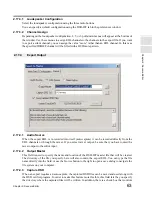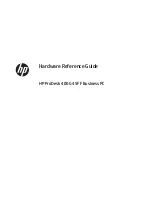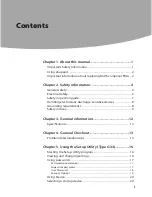
60
Chapter 2: Sonoma Editor
C
hap
te
r 2:
So
no
m
a
Edi
tor
This version of the Sonoma application contains an EDL-based DSD to DSD-IFF (Direct Stream
Digital-Interchange File Format) audio export utility. In order to export an EDL you must perform
three steps:
1. Declare the range of the EDL to be exported using track Start and track End marks. The audio to
be exported will begin at the first track Start mark and end at the last track End mark. There must
be a matching track End mark for the last track Start mark. Disc marks will be added to this range
in the final exported file. The disc Start mark will be placed two seconds before the start of audio,
and the disc End mark will be placed two seconds after the end of audio. (§
2.15
describes how
to use the mark editor to place track marks.)
2. Enter the DSD-IFF meta-data, set the loudspeaker configuration, and specify which tracks of the
EDL to export.
3. Specify the output file types and file names and perform the export.
Steps two and three are accomplished with the export dialog box. The dialog is accessed from the file
menu’s export to master command.
When the export command runs, it creates a new “export EDL” in the same directory as the output
files. It will have the same name as the export files, but with a
.export.edl
extension. The export EDL
contains a copy of the original EDL's mark list and all the ingredients within the export range.
The ingredients on each track are trimmed to the range between the first track Start mark and the last
track End mark. A two second silent pre-roll is inserted before the actual position of the first Start
mark, which may include an offset (see §
2.15.5.5
). Note that the position of the entire audio
program, including authoring marks, may be slipped in the export EDL so that the pre-roll starts at
00:00:00:00 and the first Start mark (adjusted for any offset it may include) will actually occur at
00:00:02:00. If it has an offset, the Start mark will appear in the EDL at 2 seconds plus its offset.
If necessary, the export EDL is then re-recorded into itself (i.e., record channel output, sometimes
called “auto-capture”) so that each channel contains exactly one ingredient, spanning the interval
from disc start to disc end. After re-recording, the export EDL is saved as a read-only file, which
serves as an archive of the source material.
Depending on the complexity of the EDL you wish to export, you might want to consider removing
ingredients on channels that you are not exporting. (Either cut them from the EDL or make a copy of
the EDL that only contains the export material.) During the capture process, all channels will play
whether they are part of the final export or not. Removing unnecessary material can increase disk
bandwidth and improve system performance.
Note that the export function is EDL driven. To export raw DSD files, import them into an empty
EDL, add the appropriate marks and export that EDL.
To initiate the export process, select the export to master command in the file menu. The export
dialog will appear. This is a modal dialog, while it appears no other Sonoma activity is possible.
2.17 Exporting an SACD Mastering File
2.17.1
The Export to Master Command
Содержание SONOMA
Страница 12: ...Sonoma Audio Workstation User Guide Copyright 2003 Sony Corporation of America All rights reserved ...
Страница 18: ...Sonoma Audio Workstation User Guide xvi ...
Страница 22: ...4 Chapter 1 Introduction Chapter 1 Introduction ...
Страница 90: ...72 Chapter 2 Sonoma Editor Chapter 2 Sonoma Editor ...
Страница 120: ...102 Chapter 3 Sonoma Mixer Chapter 3 Sonoma Mixer ...
















































